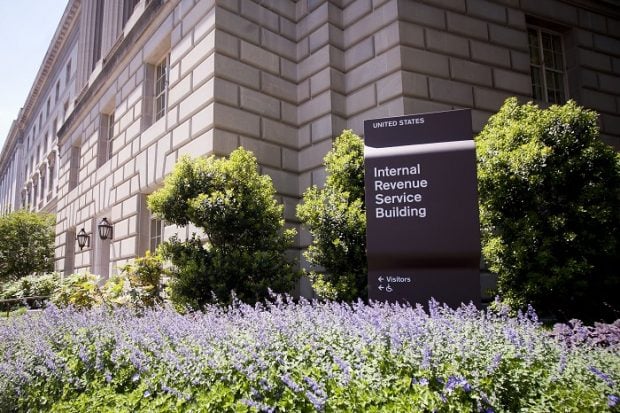 Contrary to other reports, an employer's 401(k) match cannot be used to accelerate student loan payments. ERISA lawyer Jeffrey Holdvogt says that the 5 percent match would go to a participant's 401(k) account and not to servicing student loan debt. (Photo: Diego M. Radzinschi/ALM)
Contrary to other reports, an employer's 401(k) match cannot be used to accelerate student loan payments. ERISA lawyer Jeffrey Holdvogt says that the 5 percent match would go to a participant's 401(k) account and not to servicing student loan debt. (Photo: Diego M. Radzinschi/ALM)
A private letter ruling from the IRS to an anonymous 401(k) plan sponsor may create a template for other employers hoping to address workers' student loan debt burden.
According to the letter, released last week, participants can earn the 401(k) plan's employer match without making their own contributions to the plan, so long as participants can prove they have made payments to service student loan debt.
The plan in question offers a generous match—the employer chips in 5 percent of participants' salary after a 2 percent employee deferral.
Under the IRS's explanation, the employer can still match 5 percent to a 401(k) account if a participant elects to pay at least 2 percent of their salary to a student loan repayment.
In effect, the letter permits the employer sponsor to address those workers who may be paying down student debt in lieu of saving for retirement.
Jeffrey Holdvogt, a partner in the ERISA practice with McDermott Will & Emery, clarified that the 5 percent match would go to a participant's 401(k) account and not to servicing student loan debt.
“The program that the IRS private letter ruling describes would add a 5 percent contribution to the retirement plan–technically, an employer 'non-elective' contribution–for those who verify that they make sufficient student loan repayments,” said Holdvogt in an email.
“The benefit does not directly pay down an individual's loan debt,” he added. Some reports have indicated the employer's match could be used to accelerate student debt payments.
Clearing employers' confusion
Participants in the plan would have to voluntarily opt in to take advantage of what the IRS letter calls a SLR—student loan repayment.
The ruling gives workers in the plan considerable latitude in how they balance obligations to their student loans and their future retirement security.
For instance, if a worker doesn't make an SLR of at least 2 percent of salary during a pay period, but does defer 2 percent to their 401(k) account, the employer would still contribute the 5 percent match. As long as the employee is deferring 2 percent of earnings to either student loan debt or their retirement account, the employer would make the 5 percent match.
And employees can defer contributions to the 401(k) even if they also pay the minimum 2 percent to their student debt.
All told, 45 million Americans hold a total of $1.52 trillion in student loan debt, accounting for the second largest source of consumer debt behind mortgages, according to Federal Reserve data.
Those obligations present an impediment to retirement savings that employer sponsors of defined contribution plans are increasingly conscious of.
A 2016 study by the Plan Sponsor Council of America showed that one in five plan sponsors with more than 1,000 participants were considering adding a student loan repayment program as a workplace benefit.
Despite that interest, relatively few employers have taken action. Only 1.4 percent of sponsors surveyed by the PSCA offered a student debt repayment program.
An absence of guidance from the IRS as to whether or not SLR programs could be woven into 401(k) plans is one reason for the slack uptake.
“Historically, many plan sponsors have questioned whether such an approach would be permissible under IRS rules. As a result, to date, employers have been reluctant to create student loan benefit programs that specifically link 401(k) plan contributions to student loan repayments,” writes McDermott Will & Emery's Holdvogt and Sarah Engle, also a partner in the firm, in a blog post.
The IRS's private ruling letter addresses only the circumstances of the anonymous plan in question, and may not be used or cited as precedent, the letter says.
Nevertheless, Holdvogt and Engle expect the letter will motivate more employers to follow suit.
“The PLR will very likely cause many employers, particularly employers with a young and educated workforce, to consider offering a student loan benefit as part of their retirement program,” the attorneys write.
Sweetening the retirement savings incentive
The average student loan monthly payment for borrowers between the age of 20 and 30 is $351, according to the Federal Reserve Bank of New York.
For an employee earning $50,000 a year, or about $4,200 a month, the average monthly debt payment amounts to 8.63 percent of earnings.
If a hypothetical employee earning that much in the plan addressed in the IRS's letter can show they paid 2 percent of monthly earnings—or $84—to student debt, they would be eligible for the employer's 5 percent match—$210 a month, or $2,520 a year.
“This helps kill two birds with one stone,” said Mike Brown, a research analyst with LendEDU, a Hoboken, New Jersey-based startup that provides a marketplace for student debt refinancing.
“It's a great idea,” Brown said of the IRS's ruling letter. “The average borrower has $28,000 in student debt. They have to worry about making that payment on top of others, so they may not be able to focus on saving for retirement.”
LendEDU is part of a growing cadre of millennial-founded start-ups providing services to address workers' student debt burden.
Goodly, a San Francisco-based start-up, is the newest entrant to the space—its official launch was this month. The firm's web-based platform allows employers to enroll participants in a student debt management program.
“This is a great step in the right direction to making student loan benefits a standard offering through the workplace,” said Greg Poulin, co-founder of Goodly.
Poulin, like many of the entrepreneurs in the space, is motivated by personal experience with student debt. As a Dartmouth graduate student, an untimely family death forced the refinancing of his education expenses. Poulin carried $80,000 in debt when he trekked cross-country to start his career in the tech sector.
Poulin underscores the competitive necessity of offering benefits that address student debt.
“The student loan issue is a hair-on-fire problem,” he said. “Even for companies that do offer a match, it's a very tight labor market. Every company has been trying to differentiate themselves. We think student loan benefits is something we will see a lot of companies start to offer.”
New and existing service providers to 401(k) plans can be expected to model options based on the IRS's private ruling letter.
But the movement to address student loans through 401(k) plans could benefit from more guidance from Treasury and regulators, says Christine Roberts, an ERISA attorney and partner at Santa Barbara-based Mullen & Henzell.
“Existing vendors who help employers contribute towards student loan repayments will probably move to establish and market versions of the SLR nonelective contribution program described in the private letter ruling, in which case additional, and more broadly applicable, IRS guidance would be welcome,” wrote Roberts in a blog post.
“In the meantime, employers wishing to put such a program in place should not assume that reproducing the facts in the ruling is a safe harbor from adverse tax consequences, and should consult legal counsel to assess potential liability,” writes Roberts.
READ MORE:
9 ways to help 401(k) participants save more
© 2025 ALM Global, LLC, All Rights Reserved. Request academic re-use from www.copyright.com. All other uses, submit a request to [email protected]. For more information visit Asset & Logo Licensing.








